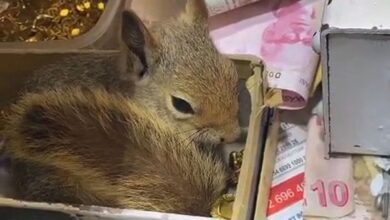

SRINAGAR, — The Jammu and Kashmir administration has been taking significant steps regarding the rearing process of cocoons to boost silk production in the region. Sericulture plays a significant role in generating employment for the locals in the north Indian Union Territory.
Experts at the Mirgund seed station are taking constant care to increase the production of mulberry fruit crops. The sericulture department stresses providing good quality leaves, maintaining the required temperature, and changing nets for good results.
“Because this is the proper season for cocoon rearing when worm silk needs a specific diet in the shape of mulberry leaves which they eat in large quantities, specifically aimed to produce good quality silk,” said Khurshid Ahmad, Farm Manager Mulberry Station.
“That is why for the last few years, the sericulture department has succeeded in introducing cocoon rearing activities in different places of the valley, including one of the biggest nurseries situated in Mirgund area outskirts of Srinagar.”

“Experts from the sericulture department are always trying to monitor this rearing process properly so that results will come out positively and is aimed at preparing quality cocoons.”
Since the quality of silk production entirely depends on the rearing process, people in the private and government sectors are working hard to get quality cocoons.
“Authorities are monitoring. But for the last few years, governments have taken very positive steps for the revival of the sector because the sector has an excellent potential to generate employment in the valley,” said Ahmad.
“If the quality of the seed is to be perfect, farmers will be able to generate good revenue,” said Abid Hussain, one of the employees. “It is our responsibility to produce good quality seeds.”
There are around five to ten people in the team, and everything is being done under supervision, as per Mir Altaf, a technician working at the farm. The temperature is specially monitored carefully.
As per reports by Statista, in 2017, the leading raw silk producer was the southern Indian state, Karnataka, with over 9,500 metric tons of raw silk produced. On the other hand, Jammu Kashmir was not there in the top 10 states producing silk.
The Ramanagara district in Karnataka is one of the largest markets for silk in Asia.
“Sericulture comprises of two important activities: cultivating food for silkworms and reeling the cocoons spun by the worms for unwinding the filament to process and weave,” states the report.
“Domesticated silkworms such as Bombyx mori are fed mulberry leaves to obtain Mulberry silk, the leading silk variety in India.”
The sericulture industry provides gainful employment to weaker and marginalized sections of the society because it is a labor-intensive industry with a low gestation period and high returns.
“Traditionally, silk cocoons are boiled along with the silkworms to harvest the fibers,” states the report. “As the production of silk threads from the cocoon is very cruel to the silkworms, many refrains from owning silk products.”
“In contrast, ahimsa silk or peace silk is made by naturally allowing the silkworm to emerge out of the cocoon. This variety of silk has the same feel as silk but has a raw appearance. Designers lean towards using cruelty-free silks such as spider silk, lotus silk, and art silk.”
(With inputs from ANI)
(Edited by Amrita Das and Saptak Datta. Map by Urvashi Makwana)
The post Rearing Of Cocoons In Kashmir To Increase Silk Production Begins appeared first on Zenger News.







